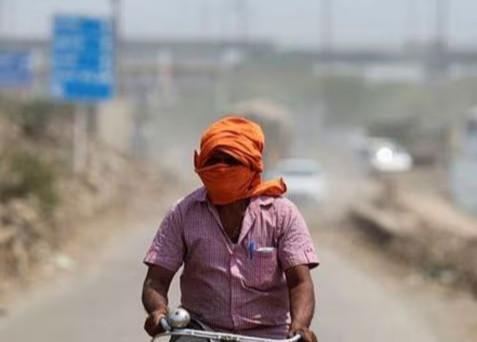
Extreme Heat Endangering Health & Productivity of Workers: Report
As the world grapples with the increasing threat of climate change, a recent report by the World Health Organisation (WHO) and the World Meteorological Organisation (WMO) has highlighted a pressing concern for workers and employers worldwide: the impact of extreme heat on worker health and productivity.
According to the report, worker productivity drops by 2-3% for every degree above 20°C. This may seem like a small decline, but when you consider the global workforce, the consequences can be significant. The report also notes that manual workers in agriculture, construction, and other sectors, as well as vulnerable populations such as children and the elderly in developing countries, are particularly at risk.
Heat-related illnesses are a major concern, with the report highlighting the risks of heatstroke, dehydration, and kidney dysfunction. These conditions can have severe and long-lasting effects on individuals, leading to absenteeism, reduced work capacity, and even permanent disability.
The consequences of extreme heat on worker health are far-reaching and can have a significant impact on the global economy. In addition to the human toll, the report notes that heat stress can also result in increased healthcare costs, reduced economic productivity, and decreased economic growth.
So, what can be done to mitigate the effects of extreme heat on workers? The report provides several recommendations for employers and policymakers to reduce the risks and protect workers.
First and foremost, employers should take steps to ensure that workers have access to shade, cooling, and hydration. This can include providing air-conditioned break rooms, installing shading devices, and ensuring that workers have regular access to cool water.
Employers should also implement heat-related policies and procedures, such as heat illness prevention plans, heat stress monitoring, and emergency response plans. These plans should be tailored to the specific needs of the workplace and should include training for workers on heat-related illnesses and how to prevent them.
Policymakers can also play a critical role in protecting workers from extreme heat. Governments can establish heat-related standards and regulations, provide training and resources for employers and workers, and invest in heat-related research and development.
In addition, policymakers can take steps to address the root causes of heat-related illnesses, such as climate change. This can include implementing policies to reduce greenhouse gas emissions, promoting sustainable development, and supporting climate-resilient infrastructure and agriculture.
The report also highlights the importance of heat-related education and awareness. Employers, policymakers, and workers themselves must be educated on the risks and consequences of extreme heat, as well as the measures that can be taken to prevent heat-related illnesses.
Finally, the report emphasizes the need for a coordinated global response to the challenges posed by extreme heat. This can include international cooperation on heat-related research, policy development, and implementation, as well as support for vulnerable populations and communities.
In conclusion, the report by the WHO and WMO highlights the urgent need for action to protect workers from the extreme heat caused by climate change. Employers, policymakers, and workers themselves must work together to reduce the risks and consequences of heat-related illnesses, promote heat-related education and awareness, and address the root causes of heat-related problems.
The consequences of inaction will be severe, with heat-related illnesses expected to increase in frequency and severity in the coming years. However, by taking prompt and effective action, we can protect workers, promote economic productivity, and ensure a healthy and safe working environment for all.
Source: https://repository.inshorts.com/articles/en/PTI/45d9bd2d-ff57-417c-9e5f-831344bb34b0






